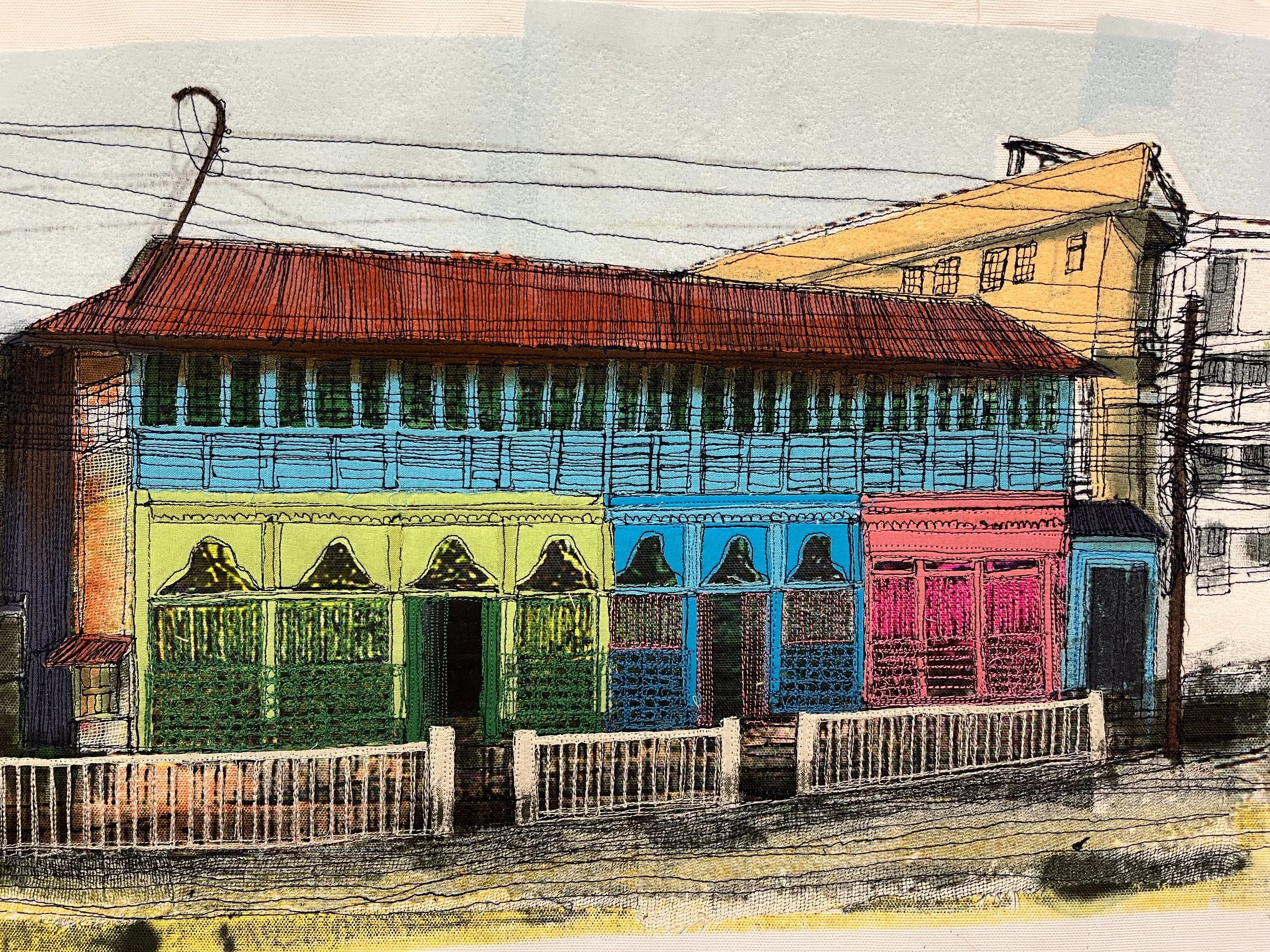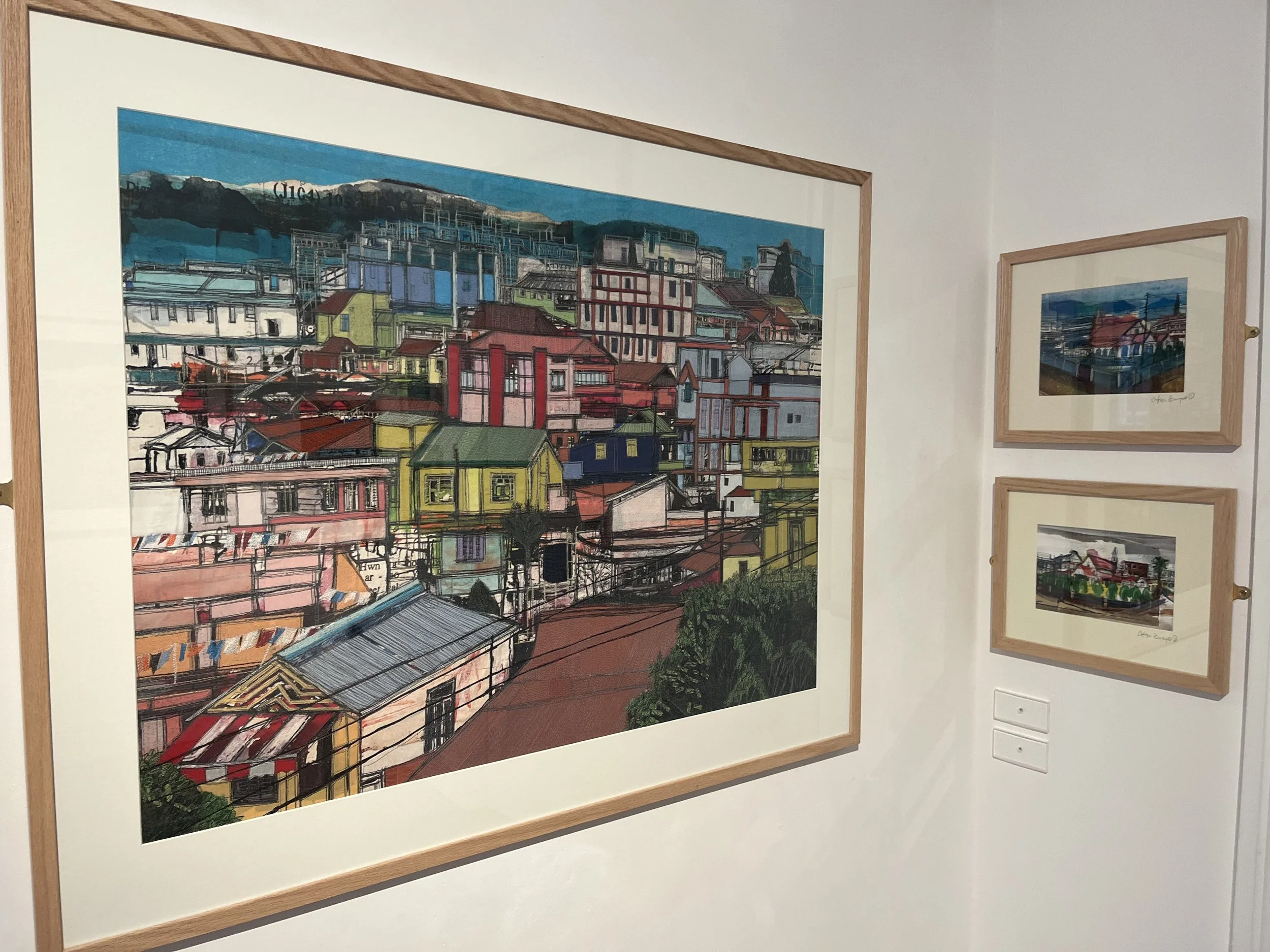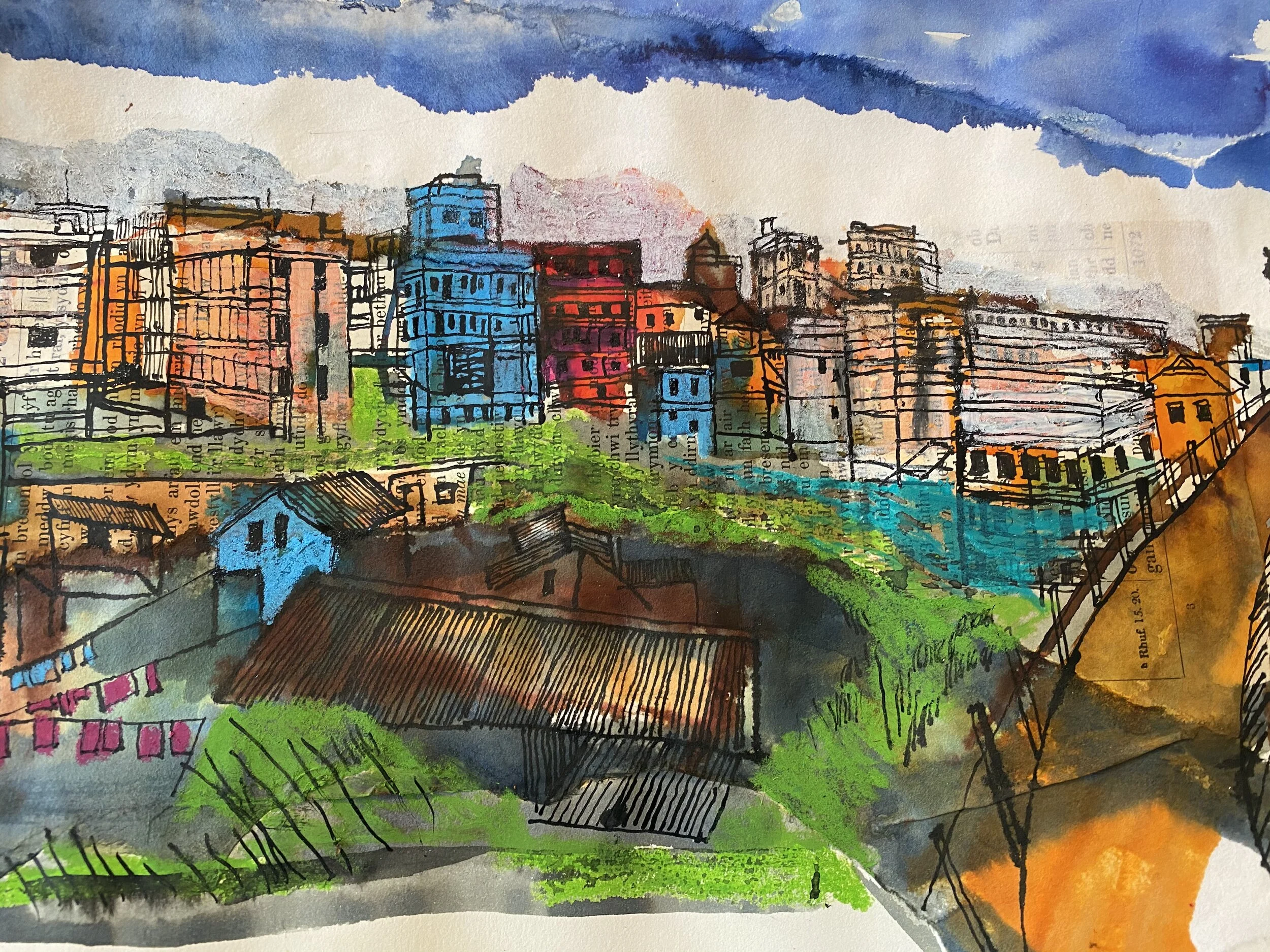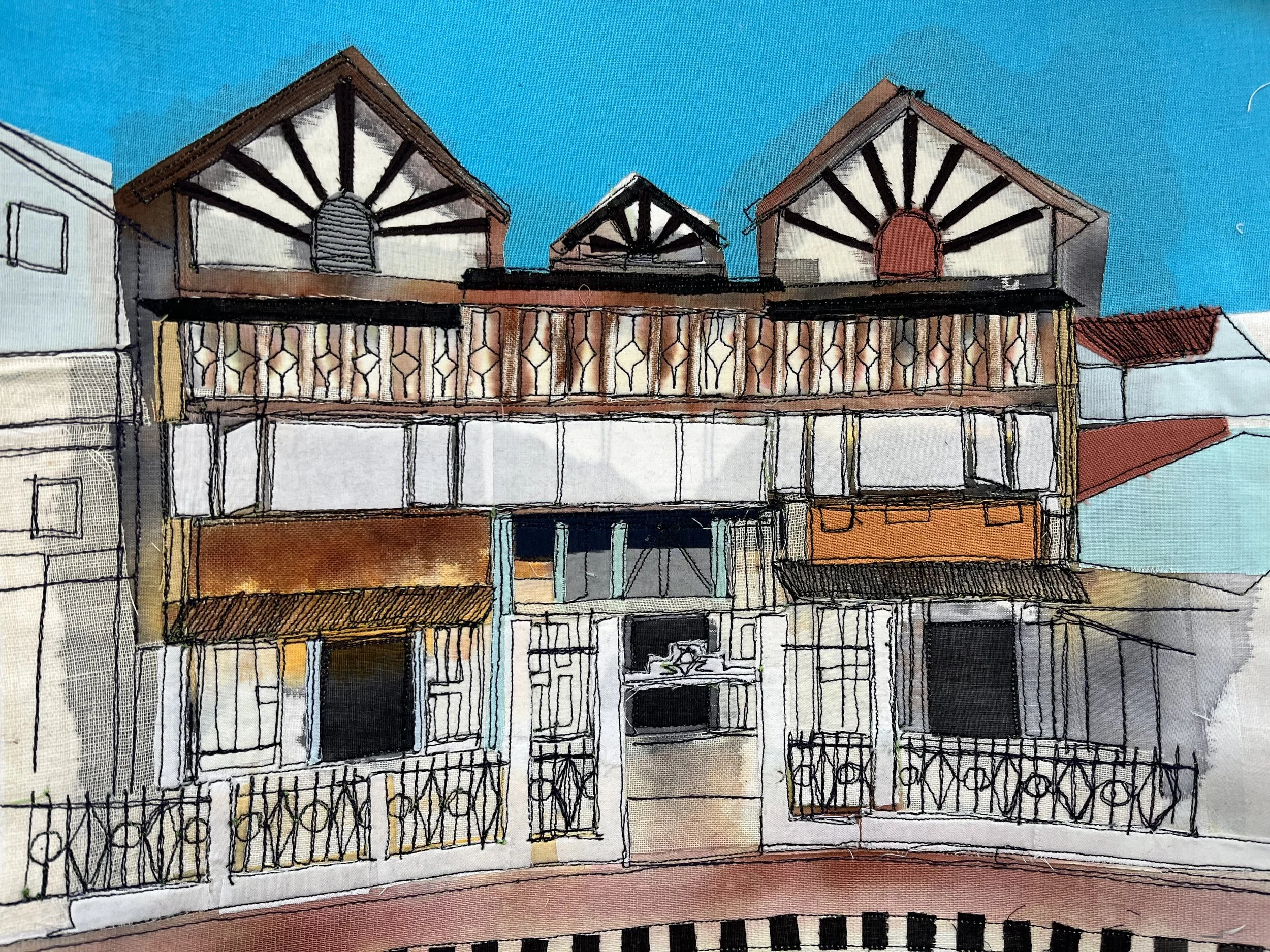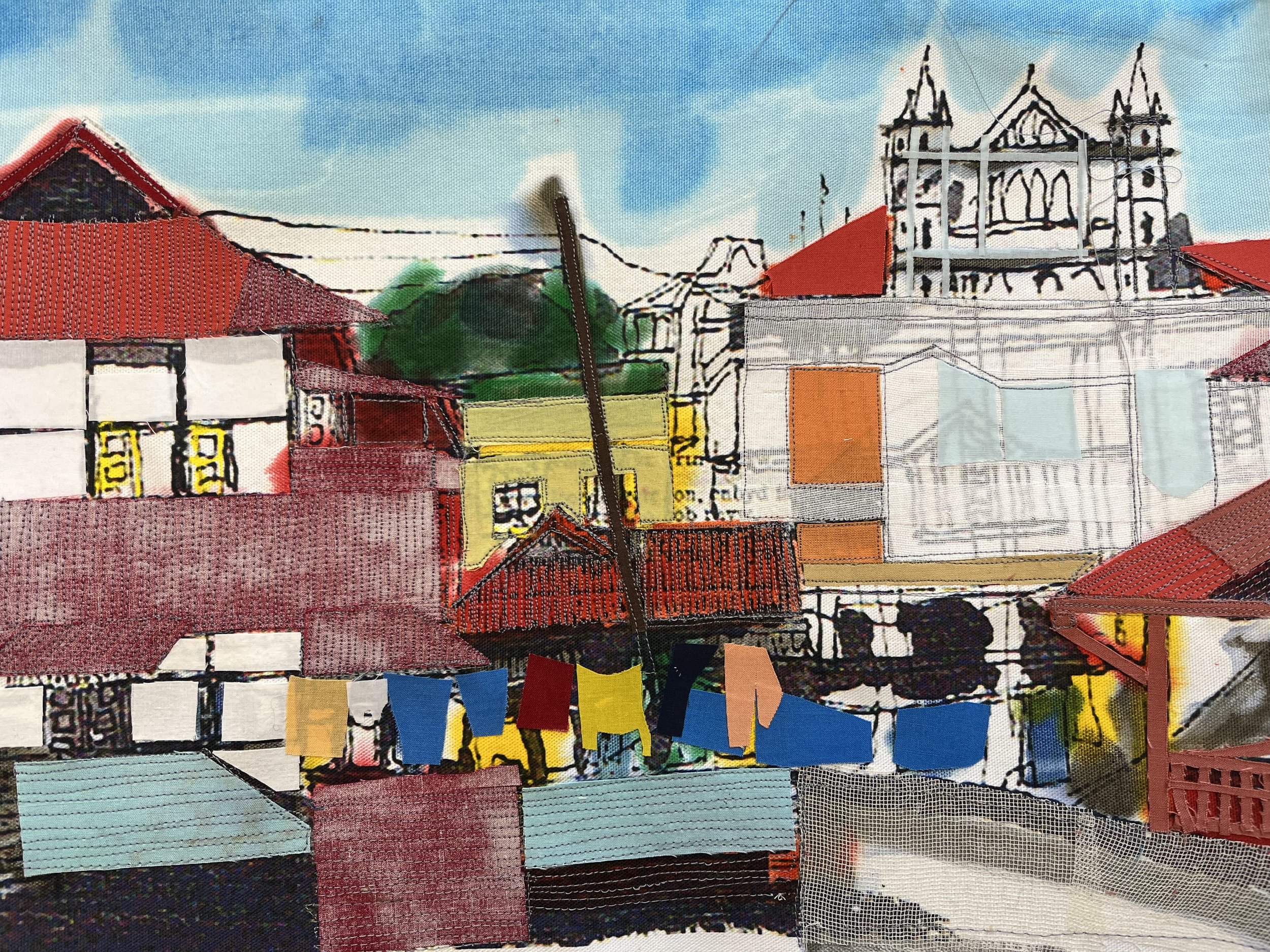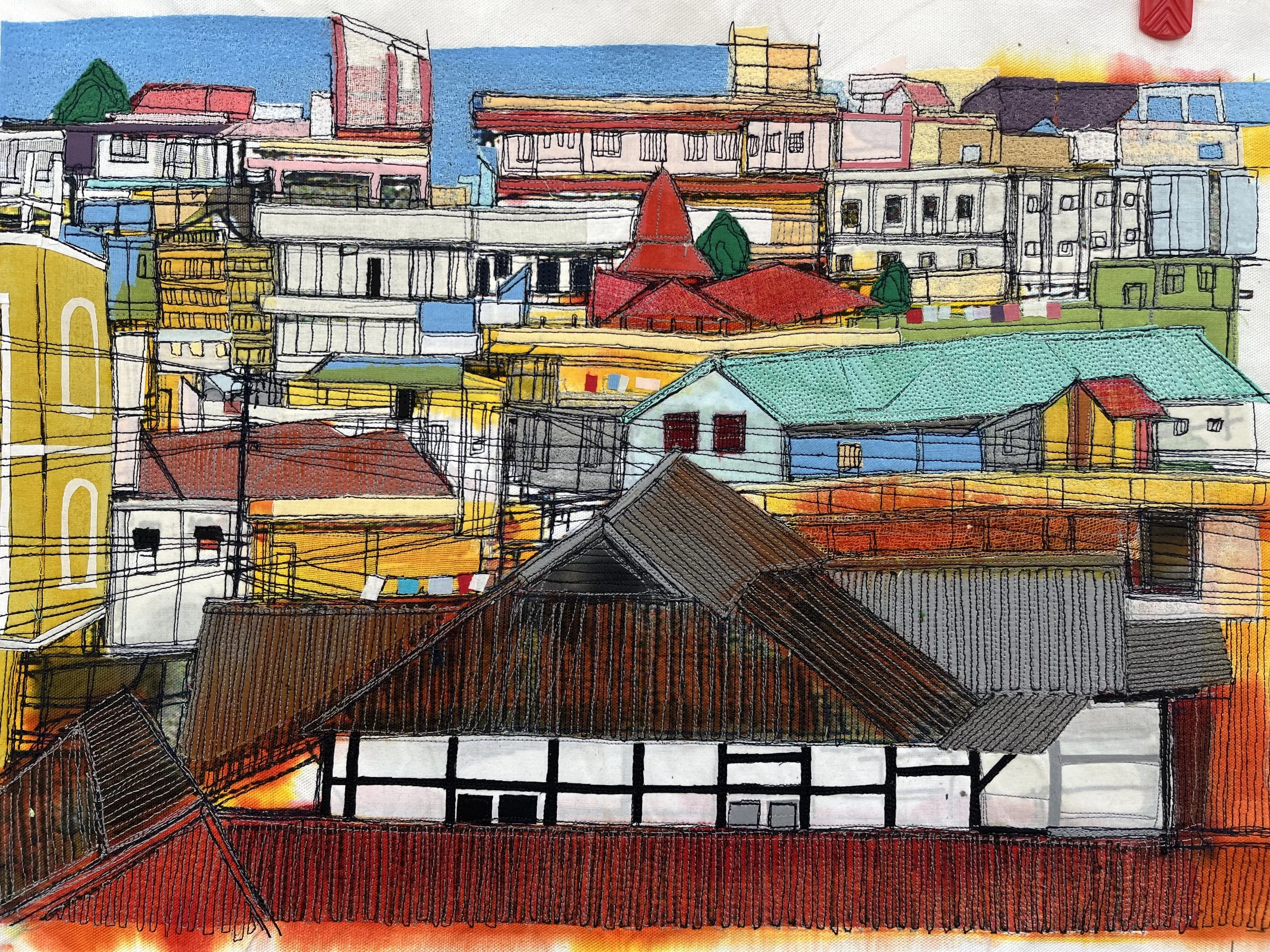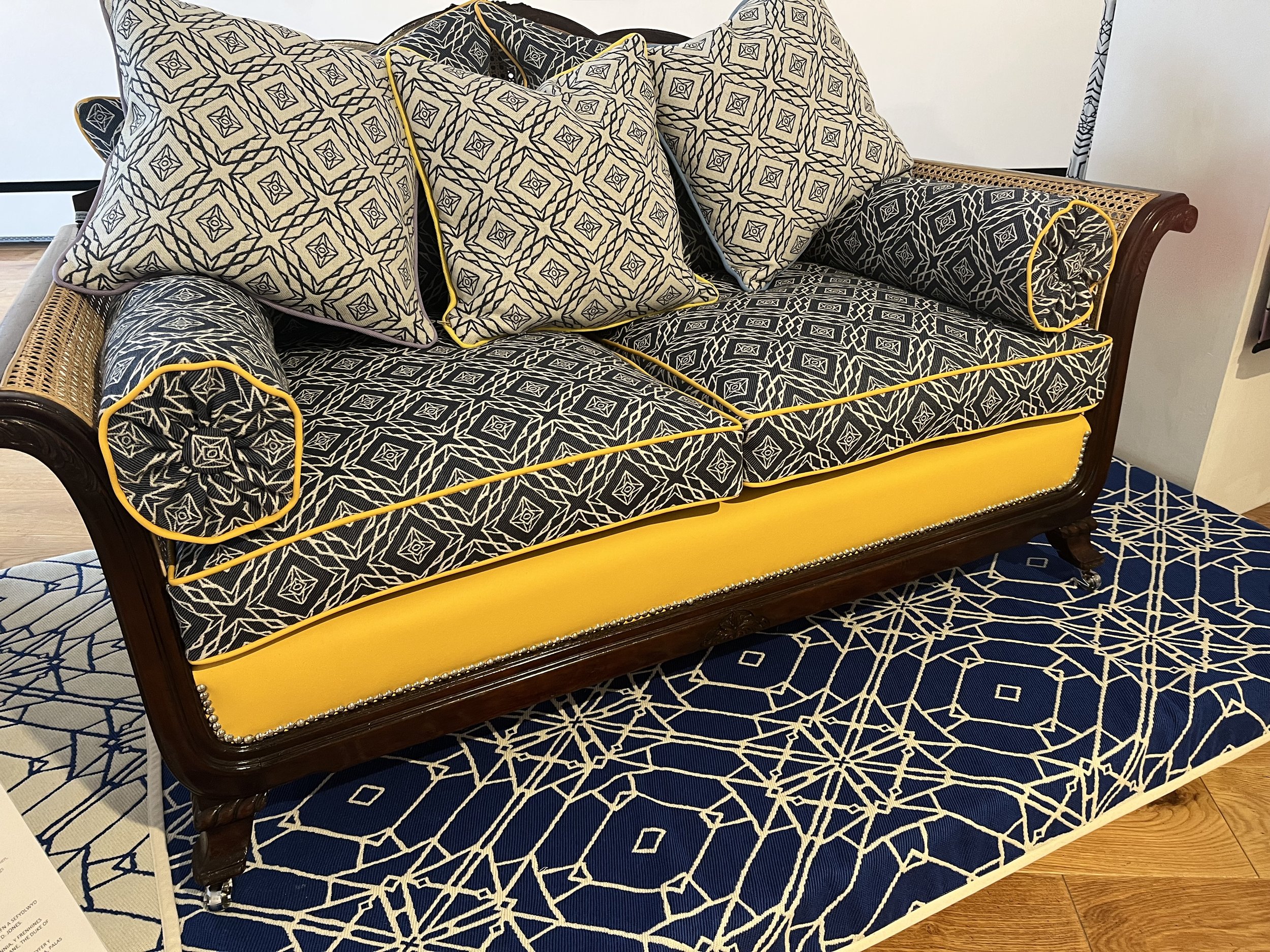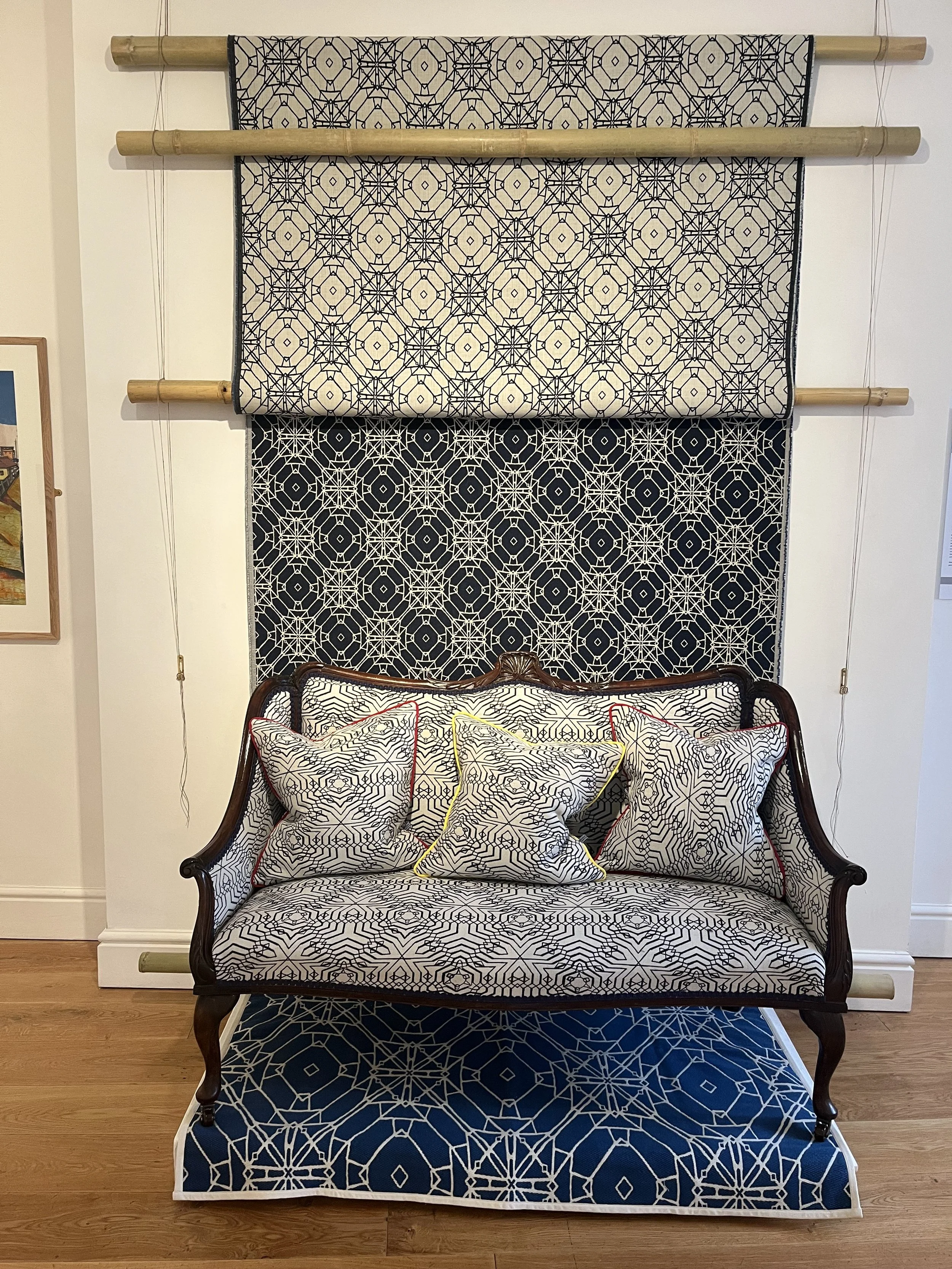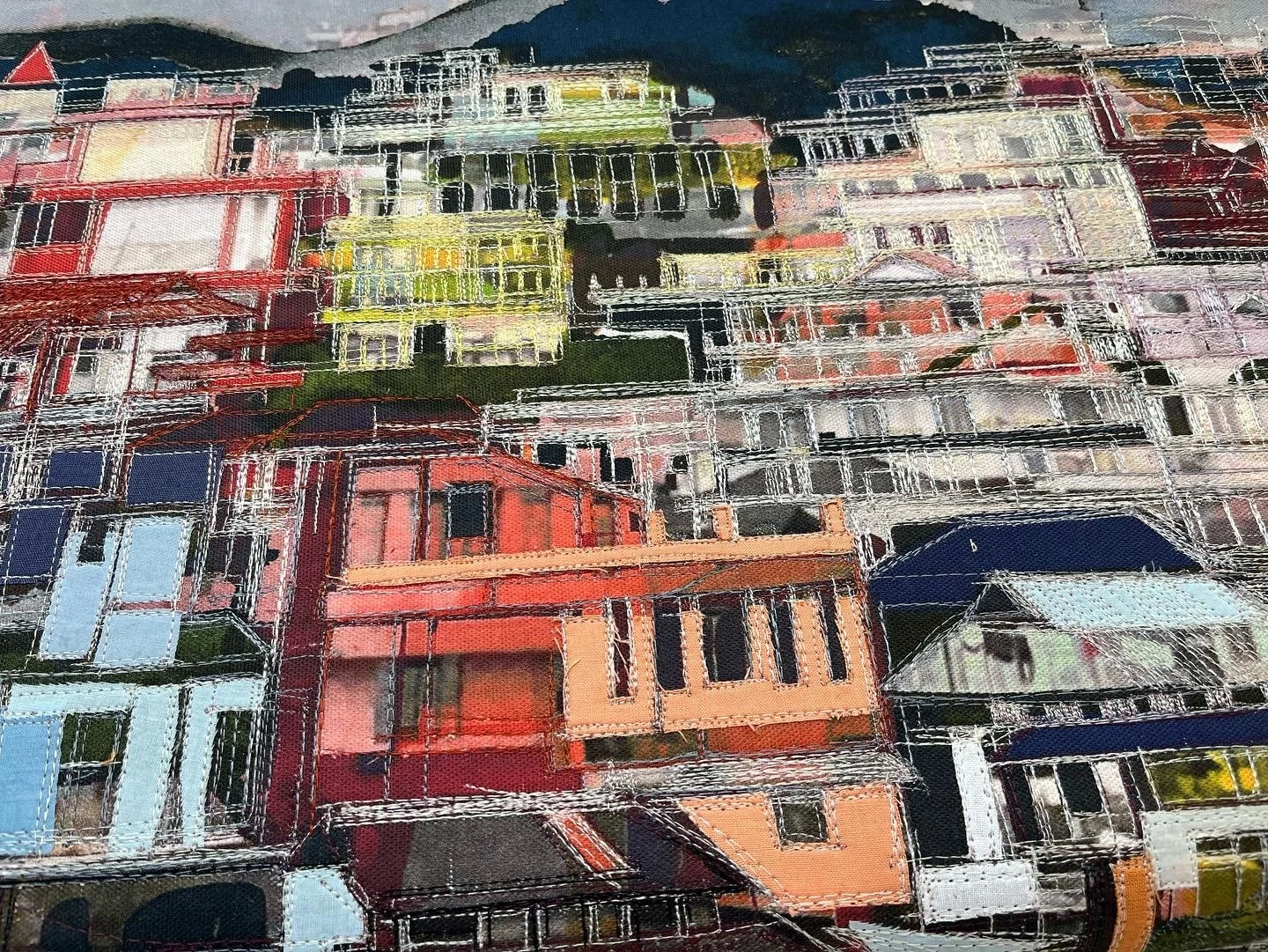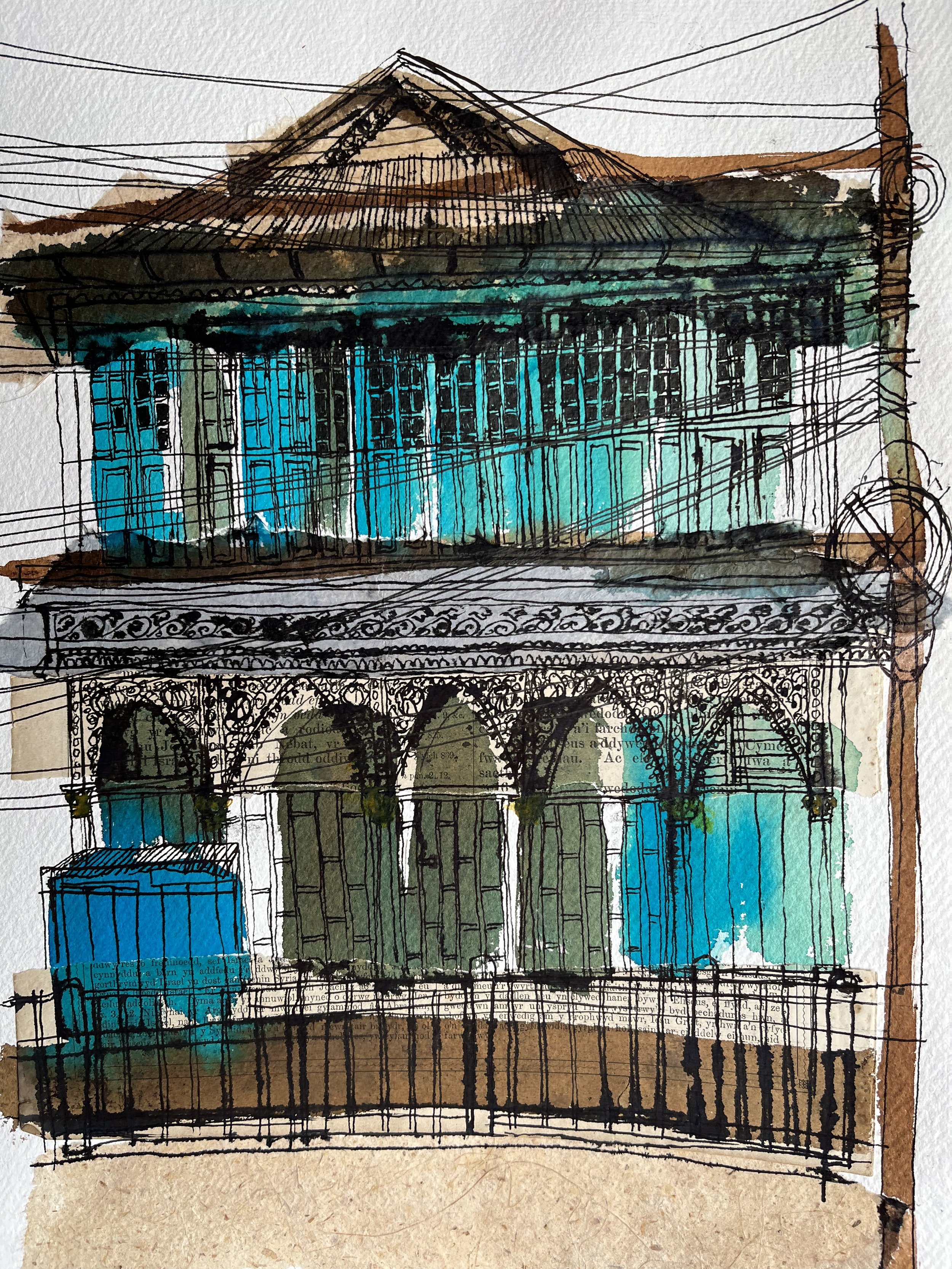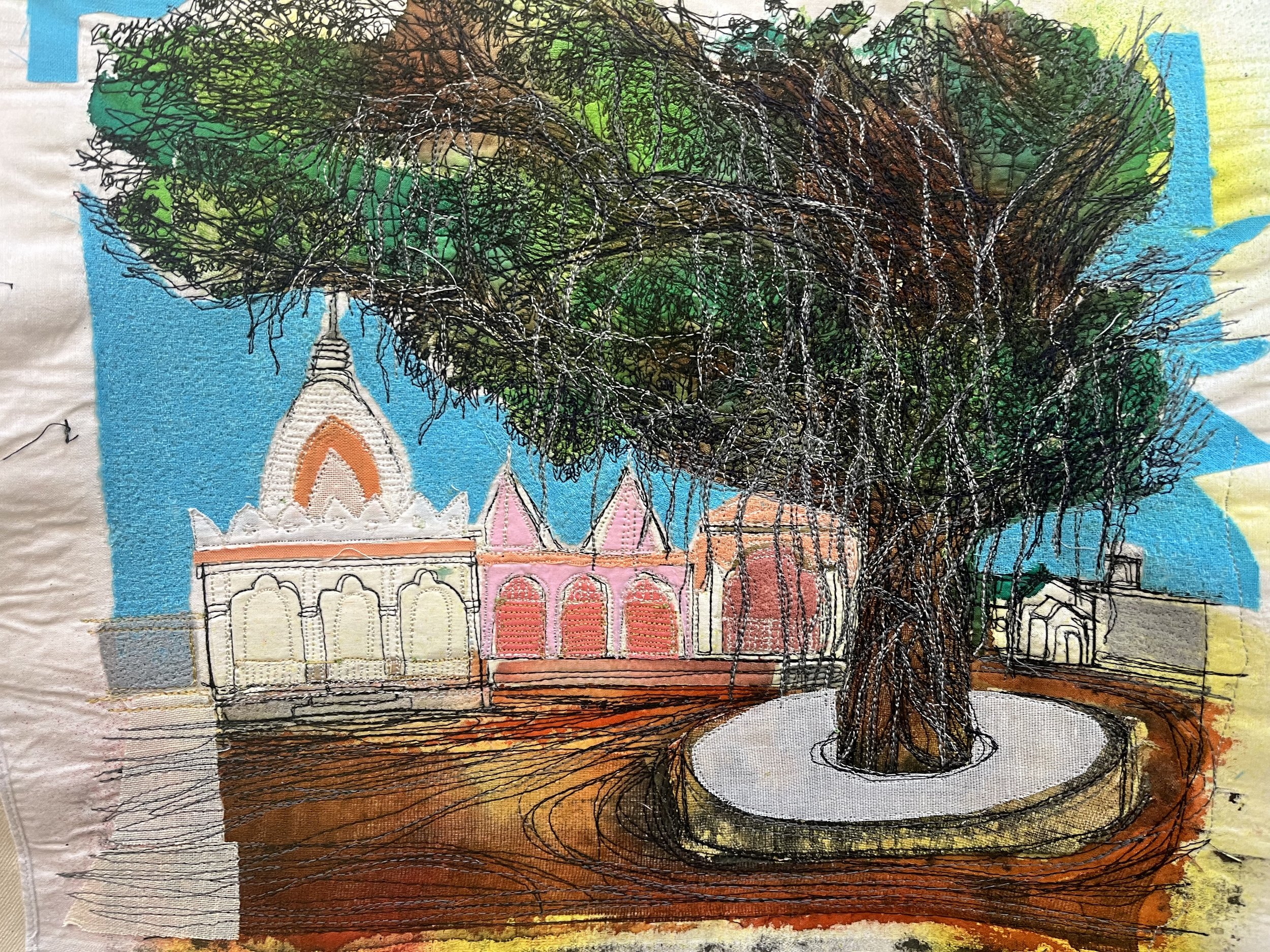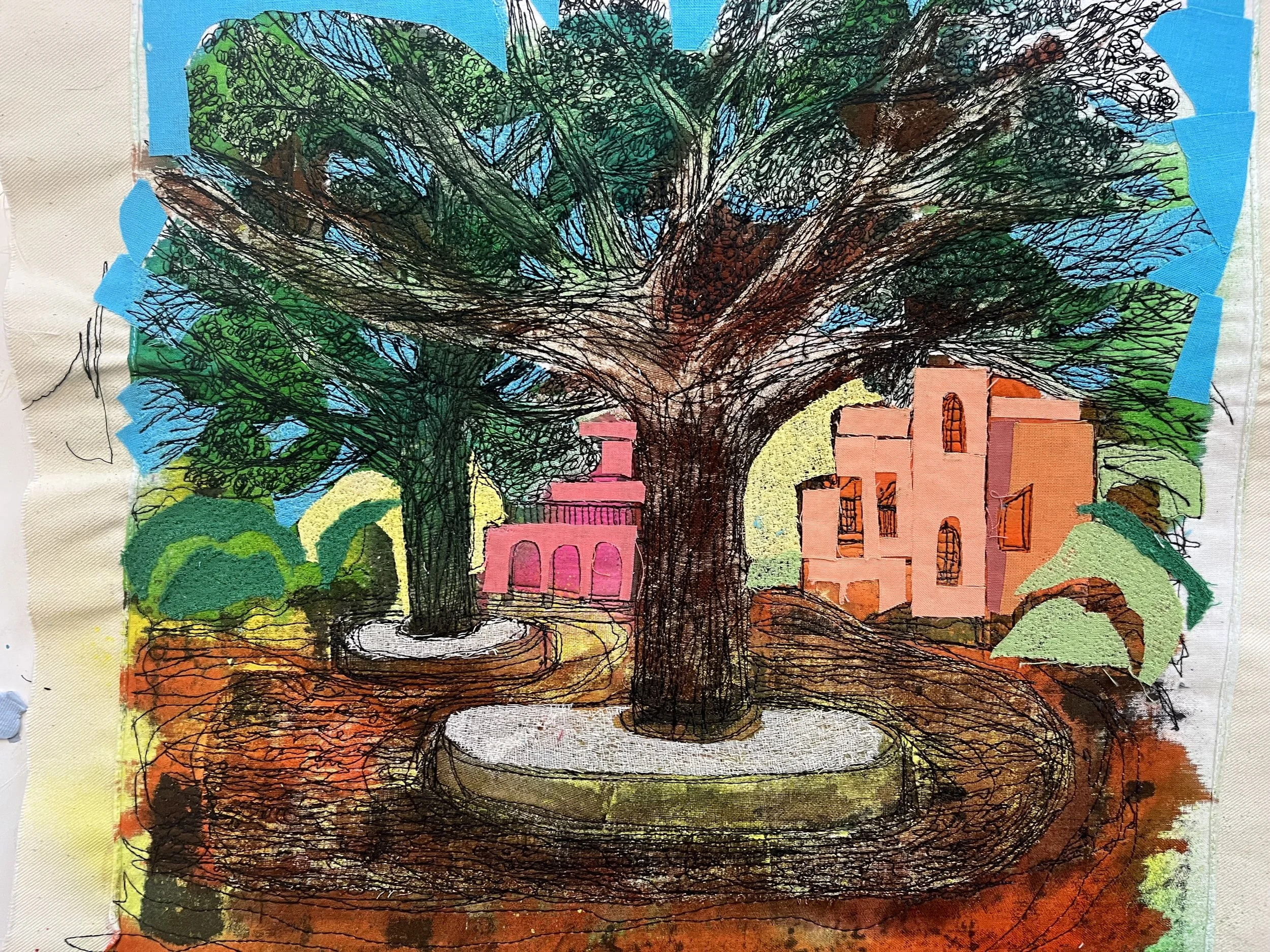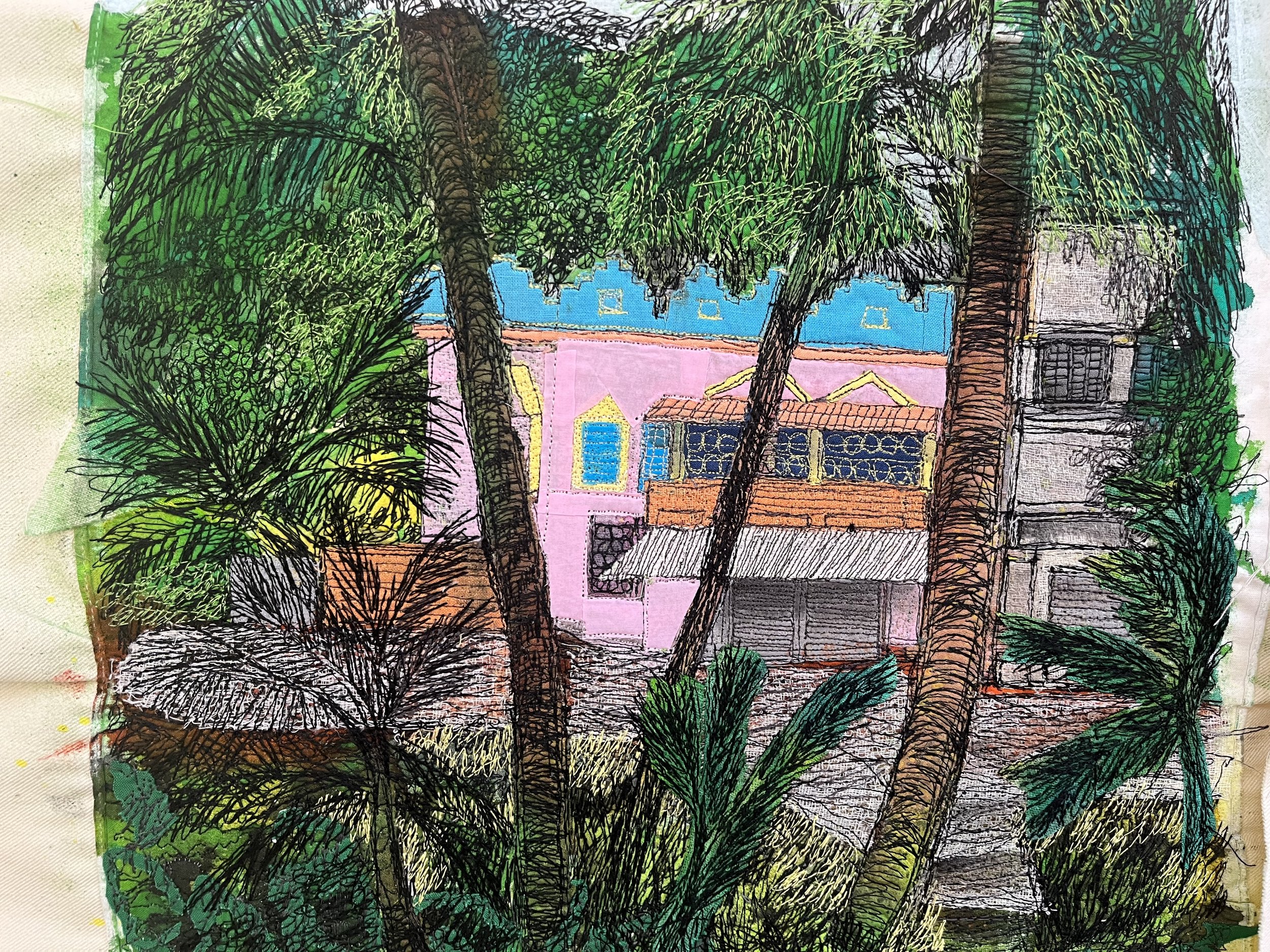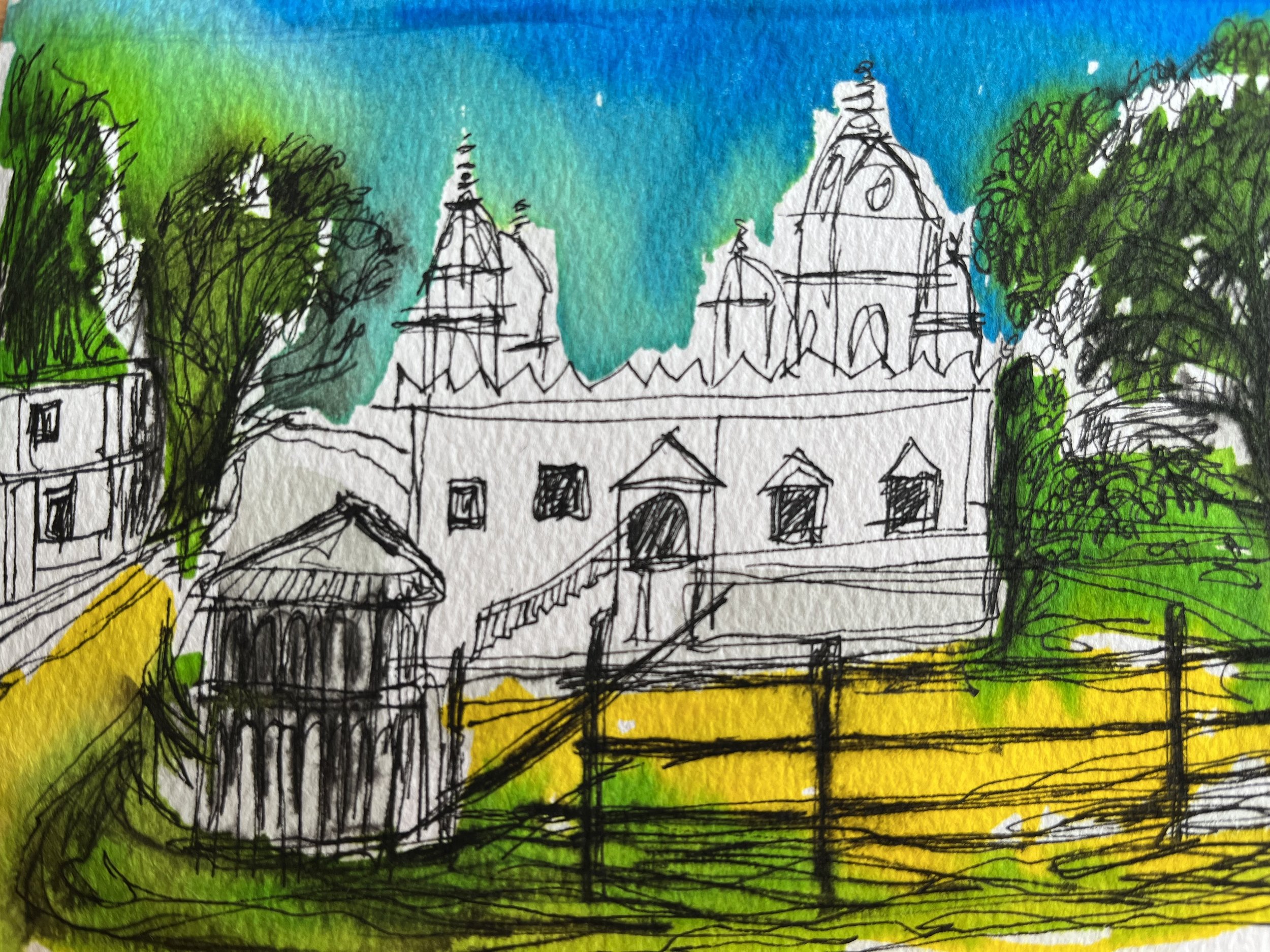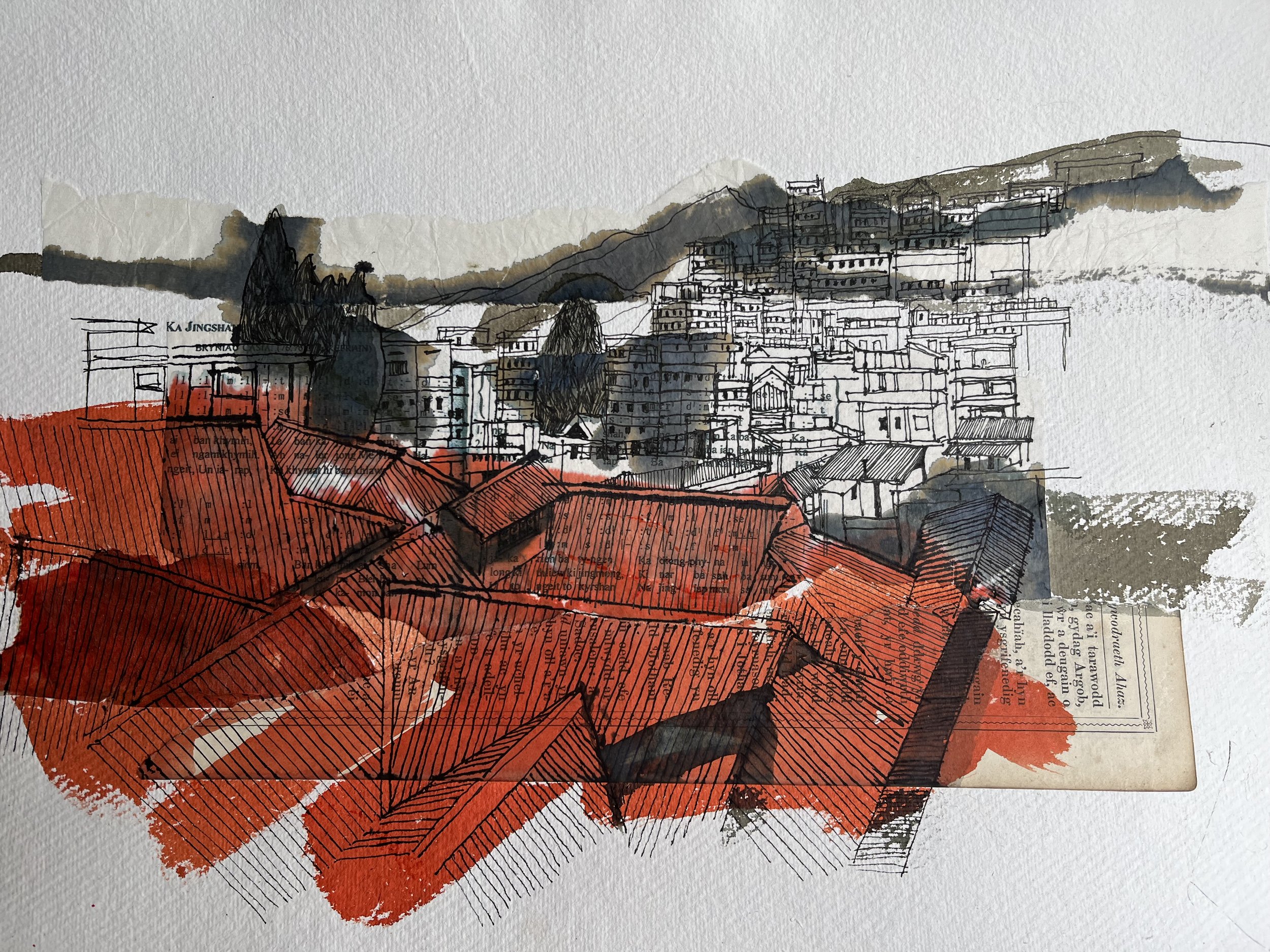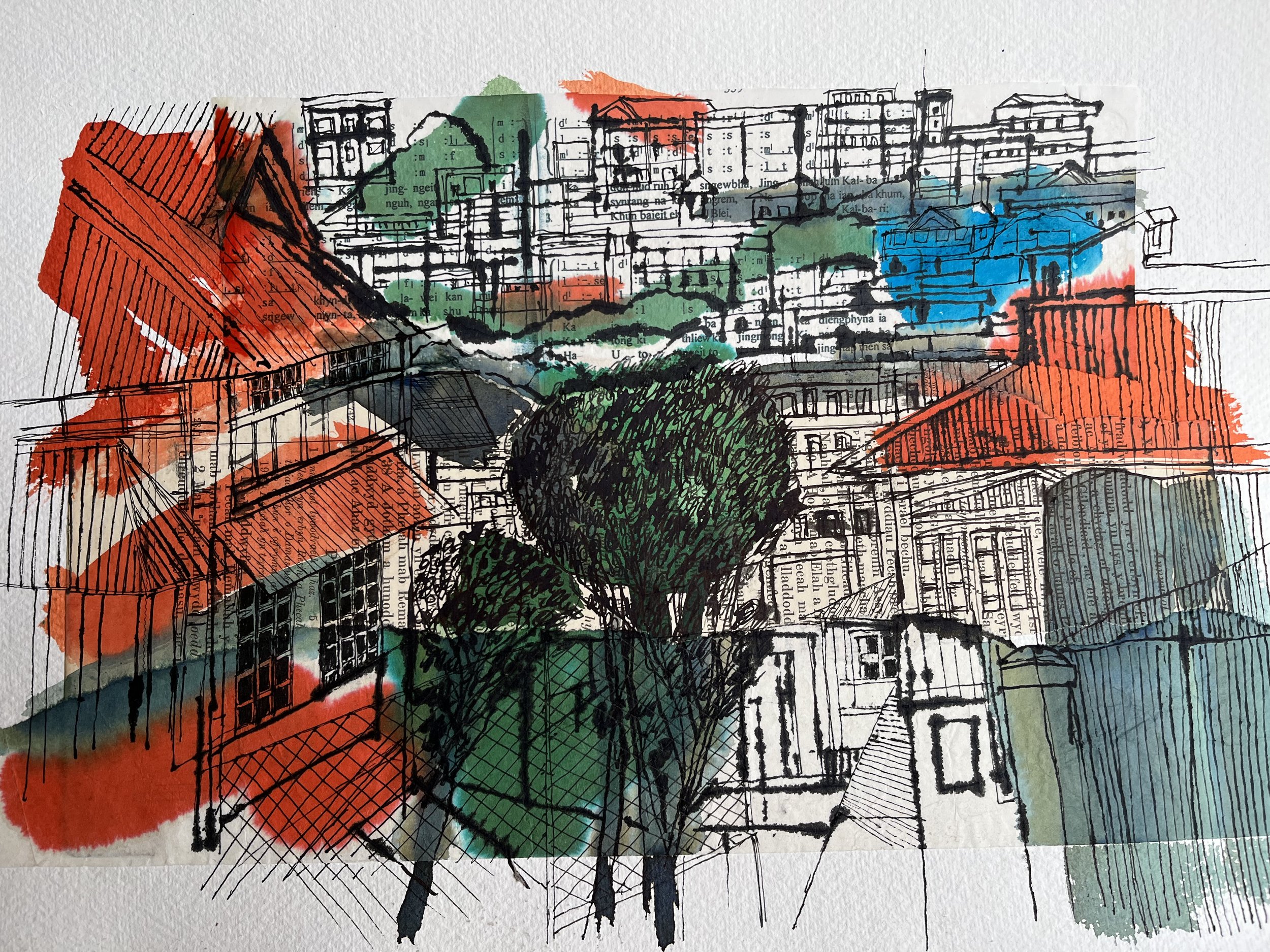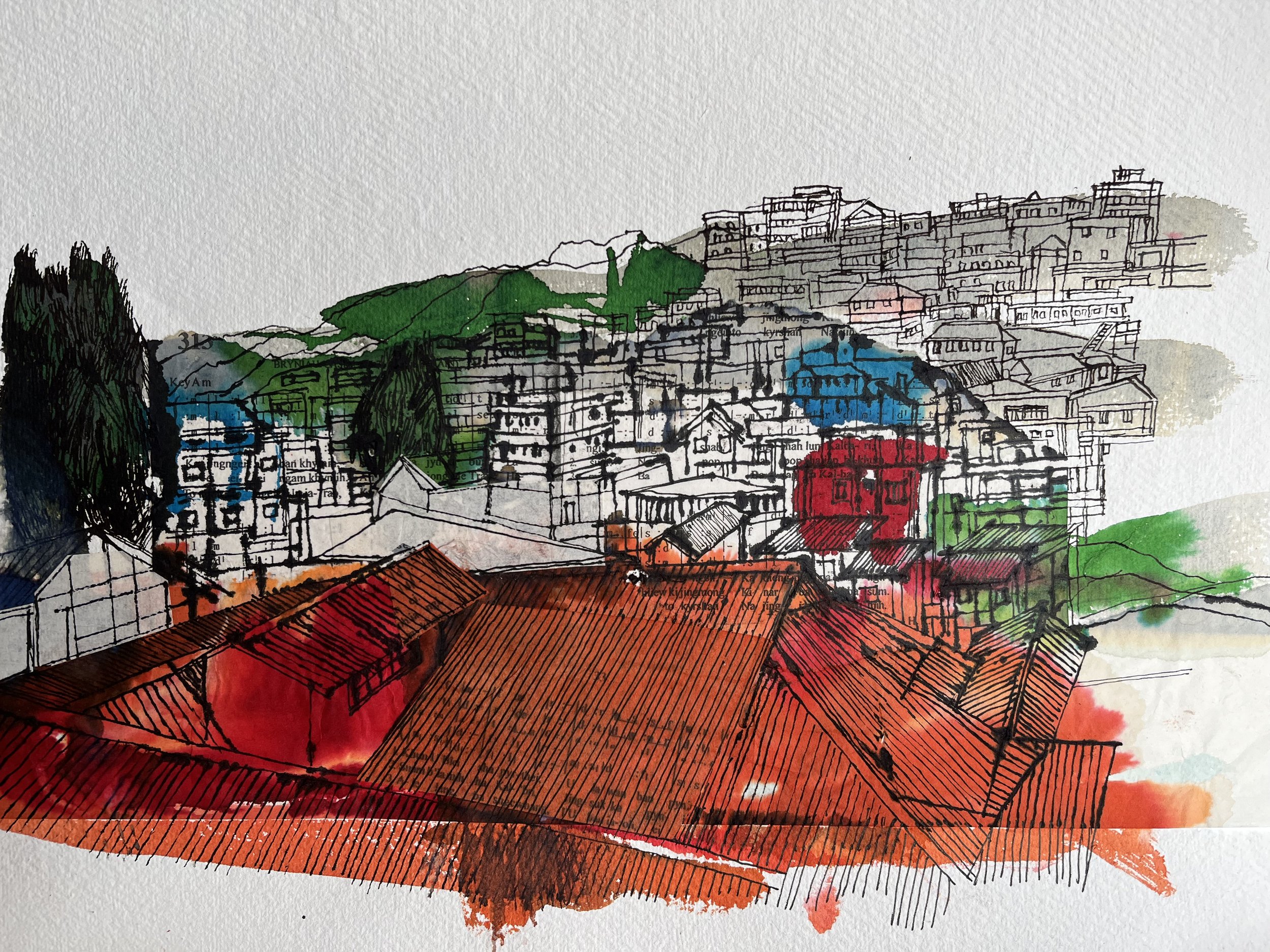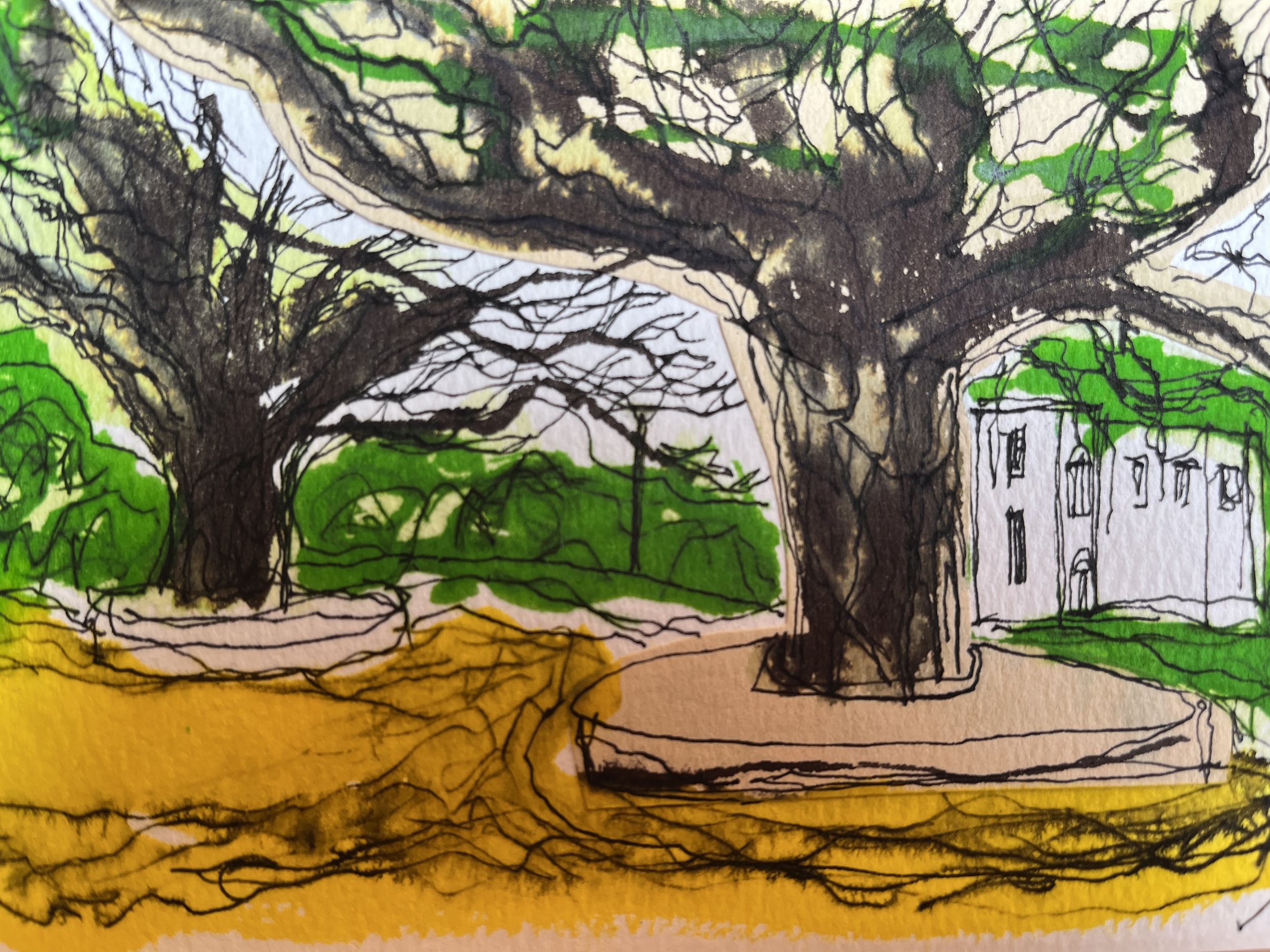shillong
Tu ol i’r Blwch- BRYNIAU CASIA
Casgliad o waith ar hanes y Cymry yn India -
New project on the Welsh in India.
Shillong.2023.
Drwy Law a llun takes a step into the life of Beryl Edwards a nurse and Margaret Owen a sister at The Gordon Roberts Hospital Shillong during !945 to 1947. Their letters to family and friends, home in Wales record and create vivid images of their lives and experiences in the Khasi hills, the environment, buildings and culture at the hight of the Welsh presence and influence. Their words have inspired me to view and present my visit to Shillong as another means of correspondence, by thinking of my drawings as post cards. A visual dairy to communicate and share what you see and experience to others
Each post card is a record of a time and place that is fast changing and disappearing, history and traditions replaced by progress. I have aimed to capture the buildings and their environment that are under threat and their part in the story of Shillong. Many historical buildings have already been lost taking with them some of the images and the sense of place captured in the letters.
.
Like in the early letters, photographs and drawings of the Welsh missionaries in recording their lives in Shillong, these postcards capture the changes in the story as it fades and disappears in the Khasi hills.
“BY Hand” introduces The Khasi People by the everyday object that they create, by using bamboo and the natural resources of the hills and forests around them. These objects are beautiful, functional and are resourcefully designed and made and have cultural symbolism and meaning and are also disappearing.
Through taking the step in introducing the story ‘By Hand’ as a means of correspondence, my path has taken a new direction that’s not wholly based on the history of the Welsh in The Khasi Hills. It is the next step in introducing the story of the connection between Wales and the Khasi Hills by presenting the story through Khasi voices.
The exhibition captures the connection between two peoples over a century and the possibilities of a shared cultural future to be grasped.
Tref Shillong, Bryniau Khasia

